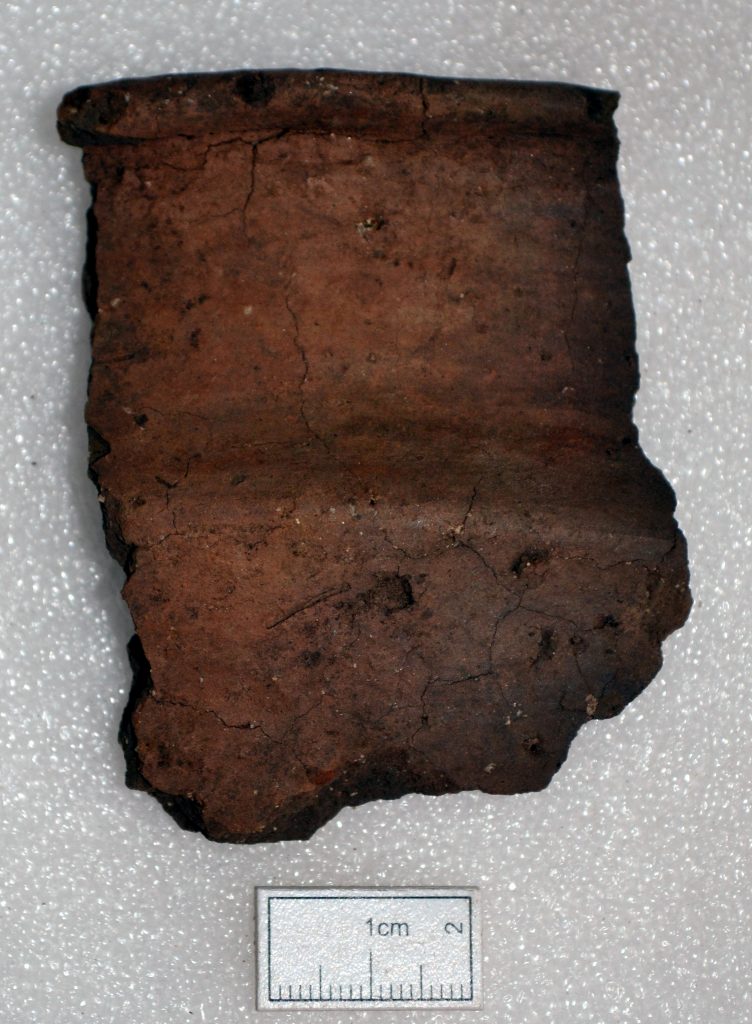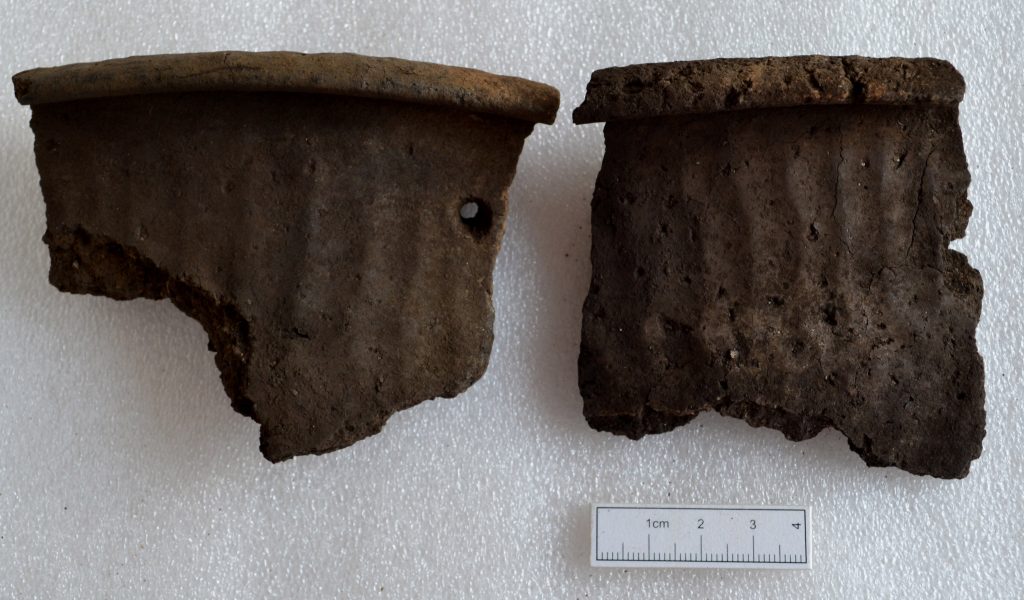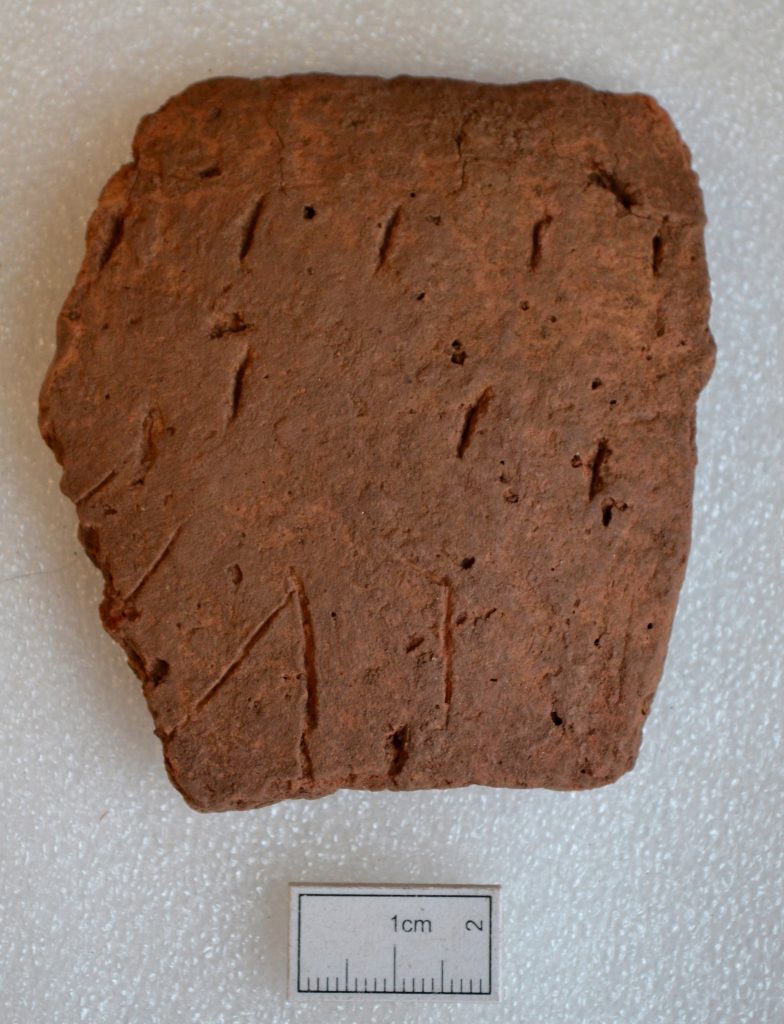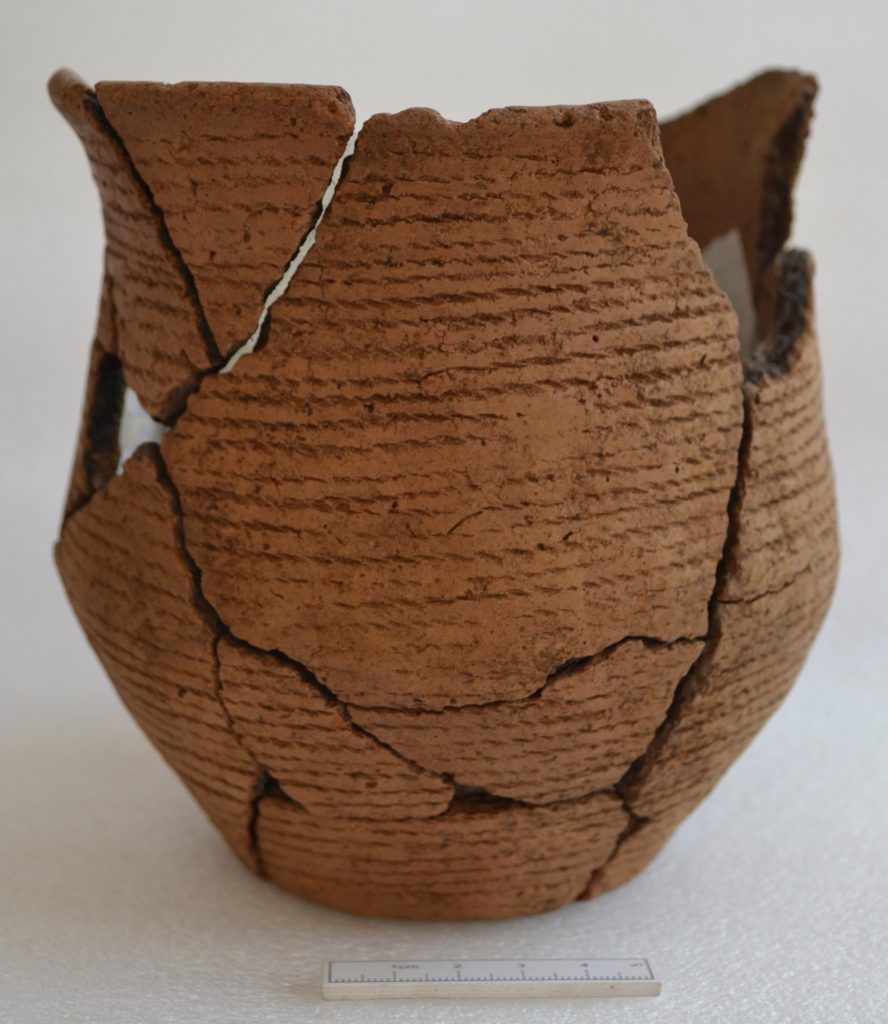

The earliest domestic pottery vessels found on the Carnoustie site are early Neolithic carinated (shouldered) bowls from c. 5500 years ago. They have curled over rims, and shoulders which divide the rim and neck from the belly and the rounded base. No complete pot survived but fragments tell us that some were finished with smoothed and polished (burnished) surfaces, while others had deliberate finger rilling (dragging the fingers down the neck of the vessel) to form a textured pattern. Occasional holes, perhaps three to four piercing the pottery around the vessel below the rim show that some vessels were suspended over the fire rather than placed in the ashes of the hearth. Many of these pots were used for food preparation.


Later Neolithic potters developed different shapes of vessels with simple rims, and decorated them with designs that were pressed into the clay – middle to late Neolithic Impressed Wares. The ends of twigs, bird bones, perhaps a flint blade, finger tips and finger nails were common tools used in decoration. The neck of vessels below the rim were decorated with designs that were horizontal, but lower down the pot the designs are more random. On some vessels, designs were created using bone and twigs, or fingernail and twig/blade, as in this example and the one above.

By the end of the Neolithic and the beginning of the Bronze Age, 4500 years ago, the function of some pottery vessels changed and although pots continued to be used for domestic purposes, some were produced to hold the cremated remains of the dead. An almost complete Beaker vessel was reconstructed. Its horizontal design was made by a wool cord wound round the whole vessel and impressed into the clay. Another pot, a funerary urn had been distorted and broken in the pit in which it lay. Note below the row of finger tip impressions decorating the pot below the rim.

